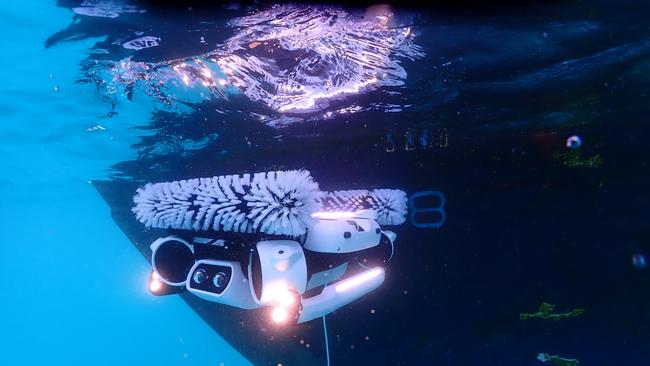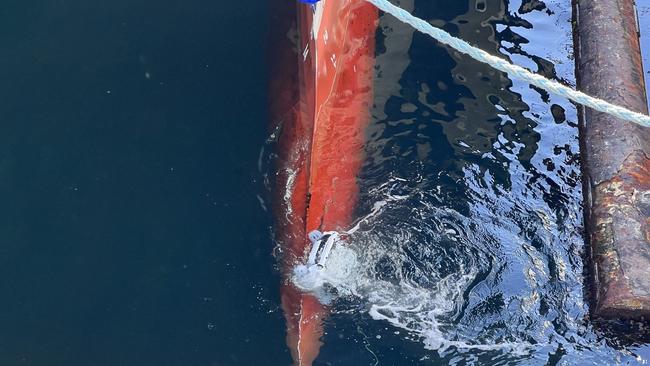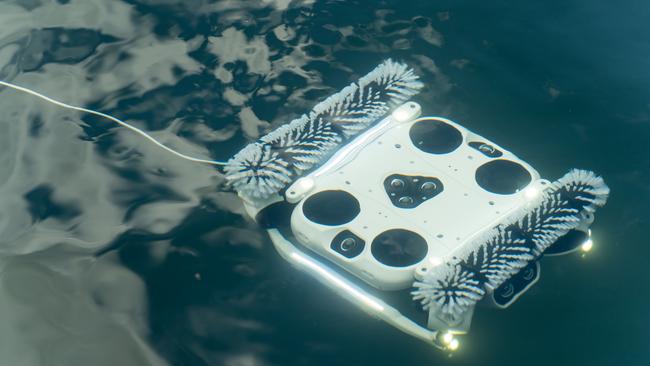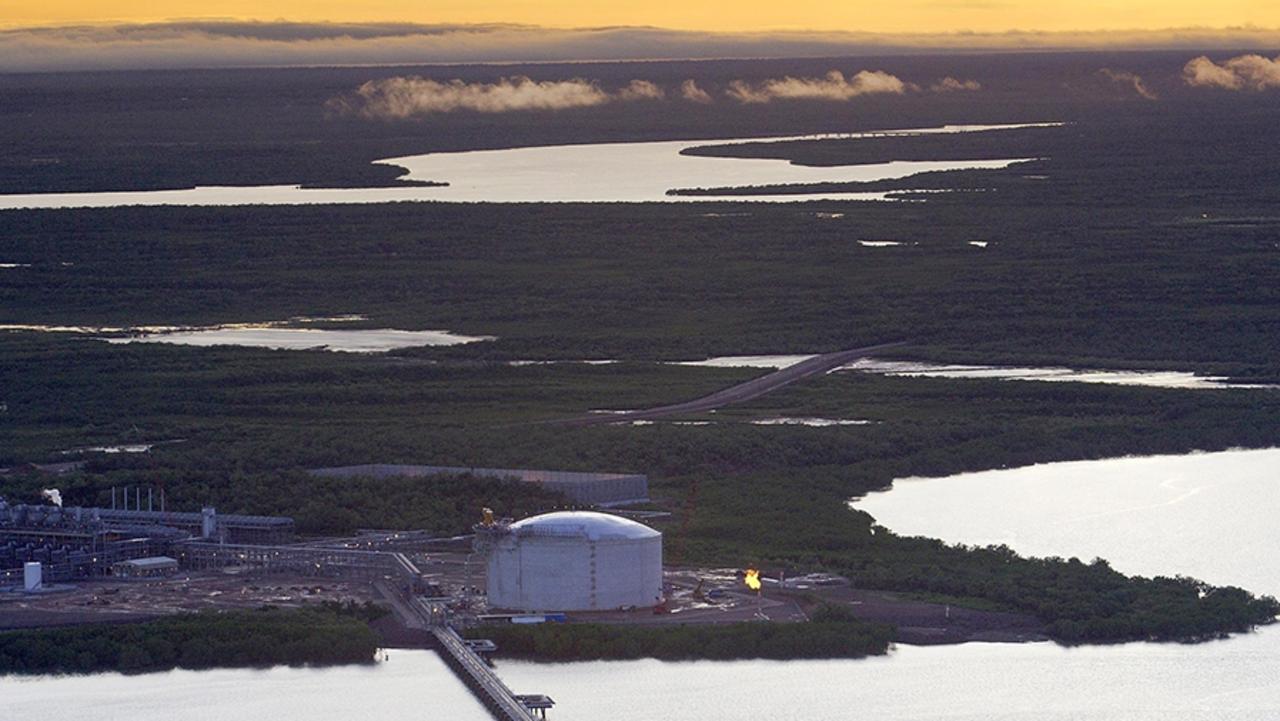Hullbot seeks $15m to scale underwater cleaning drone that doubles as a spy
Meet the Aussie diver seeking $15m to scale the underwater cleaning drone business that’s proven to save ships fuel, can map reefs and double as a spy.

Business
Don't miss out on the headlines from Business. Followed categories will be added to My News.
A Sydney start-up that has impressed the Royal Australian Navy with its autonomous underwater cleaning drones is seeking $US10m ($15m) to do it all over again in Europe and Asia.
Hullbot was founded seven years ago by 37-year-old surfer, sailor and diver Tom Loefler and electrical engineer Karl Watfern.
Mr Loefler, a Coogee local, happened upon the idea after spending several years studying boats and naval architecture. He had initially wanted to build yachts.
But part way through his studies at the University of New South Wales he changed to industrial design, which, he said, “ultimately led to a fusion of my passions for technology”.
Hullbot is now six and a half generations in with a working bot that’s about the size of a case of beer, weighs 10kg and can be deployed on demand from a pod mounted on a ship.
The drone has four brushes, seven cameras and several sensors which allow it to pick up on underwater acoustics, monitor a ship for damage, map coral reefs and monitor movement around a ship.
While the product ultimately cleans a ship’s hull, replacing what’s typically a monthly quarterly process conducted by 20 divers, Mr Loefler is adamant Hullbot is more of a maintenance product.


“We sell a clean hull, not a hull clean,” Mr Loefler said.
Hullbot wants ships to deploy the service regularly, even when in operation, and has built out its platform to have the bots automatically deployed from stations it can mount onto the ship.
“We’ve developed pods that lower the robot into the water, manage the tether and pull them back out. The pod supplies power to the robot and connects it to the internet via the tether,” he said.
Seeing the drones in action is quite the experience.
“There’s nothing quite like the feeling of snorkelling or diving underwater with a prototype that you’ve built,” Mr Loefler said. “It feels like you’re in the presence of this alive creature.”
Early into the venture, when Hullbot was still trying to get its technology right, testing of the bot was “pretty chaotic”.
“You never really knew if it would still work when you pulled it out of the water. Every single mission was full of sorts,” Mr Loefler said.

The start-up’s technology has garnered interest in several sectors, from transport to freight and defence.
Freight and ferry operators are sold on Hullbot’s finding that regular cleaning of the hull can reduce drag and save as much as 17 per cent in fuel costs.
While the navy is more interested in its monitoring capabilities as well as its ability to defend against biofouling – the build up of unintended algae and microorganisms on a ship’s hull.
That was incredibly important for ships that travel across several oceans and seek to not return with unintended passengers or unwanted guests above or below the surface.
“Boats have antifouling paint and what’s unique about our approach is that we clean proactively without damaging or eroding the paint releasing toxic chemicals into the water,” Mr Loefler said.
“Part of what makes the approach special is that we clean gently, early and often before any hard growth.
“Our robot skims across the surface wiping off slime and over time it builds a relationship with the same boats, storing data and remembering their shape.”

The start-up is raising new funds to enter the European and Asian markets, establishing offices so it can get its bots off the ground on freight and ferry operator fleets.
It’s also seeking the capital to develop a second bot, one that’s three times the size, weighing around 30kg with capacity to clean at three times the speed and an area three times the size.
That’ll be designed by the start-up’s team of around 20 people, which includes roboticista, mechatronics engineers and ocean lovers.
More Coverage
Originally published as Hullbot seeks $15m to scale underwater cleaning drone that doubles as a spy





